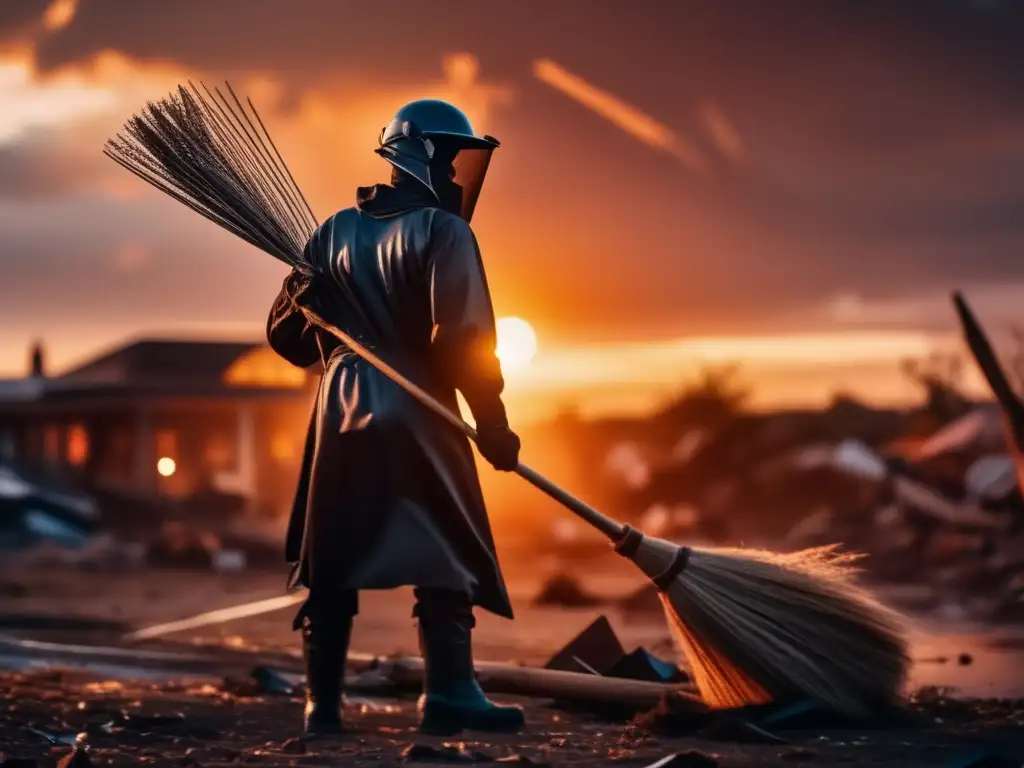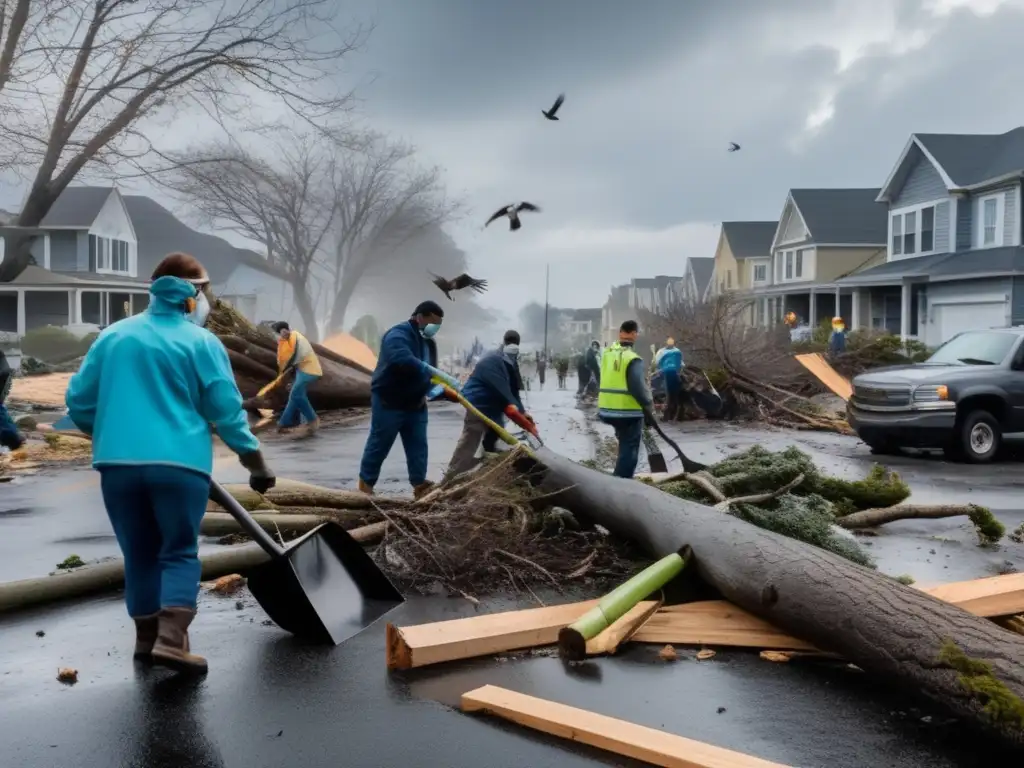Cleaning Up: Safe And Efficient Cleanup Methods After A Hurricane

Cleaning Up: Safe and Efficient Cleanup Methods After a Hurricane
Introduction
Hurricanes are known to cause widespread destruction ranging from property damage, power outages, flooding, and uprooting of trees. When a hurricane hits an area, it leaves behind a trail of debris that needs to be cleared up as soon as possible. The cleanup process can be dangerous, and it is essential to observe safety measures while clearing up the debris. In this article, we will look at safe and efficient cleanup methods after a hurricane.
Protective Gear

The Importance of Protective Gear
It is essential to prioritize your safety during the cleanup process. Hurricanes can cause various hazards, including electrical shock, sharp objects, and exposure to toxic substances. One of the most critical safety measures during the cleanup process is having protective gear. Wearing protective clothing shields the body from harm, reduces the likelihood of contracting infections, and prevents contamination.
What to Wear During Cleanup
When cleaning up after a hurricane, you should wear protective gear such as gloves, boots, goggles, and masks. The gloves protect your hands from cuts, scrapes, and other injuries that may occur during cleanup. Ensure that your boots have sturdy soles that can protect against sharp objects. Goggles are crucial in protecting your eyes from flying debris, while masks should filter out hazardous particles like mold spores and dust.
Decontaminating Protective Gear
After each use, it is crucial to decontaminate your protective gear. Proper cleaning of protective gear ensures that they remain functional during the next cleanup process. Work gloves can be washed with soap and water and dried. Boots should be scrubbed and disinfected with bleach solution before drying. Safety goggles and masks should also be disinfected using a bleach solution, rinsed with clean water, and air-dried.
Clearing Debris

Safety Measures During Debris Clearing
Hurricane debris can range from broken furniture and building materials to tree limbs and other vegetation. It is essential to adhere to safety measures during the debris clearing process. Be cautious of sharp objects such as glass and nails, which may be embedded in the debris. Also, watch out for live power lines that may have fallen during the hurricane.
Sorting Debris
When clearing debris, sort them into designated piles before disposal. Vegetative debris, such as leaves, branches, and other plant material, should be separated from construction and demolition debris, such as wood, concrete, and roofing material. Household hazardous waste, such as pesticides, oil, paint, and cleaning agents, should also be sorted into a separate pile.
Disposing of Debris
Ensure that you follow the appropriate disposal guidelines for each type of debris. Vegetative debris can be either burned or composted, while construction and demolition debris should be transported to landfills. Household hazardous waste should be disposed of through designated facilities that are equipped to handle hazardous waste. Avoid burning debris near buildings or homes, as this may cause fires.
Managing Water Damage

Assessing Water Damage
After a hurricane, many homes and buildings may experience flooding. Flooding leads to water damage, which can be costly to repair if not managed promptly. You must assess the extent of the water damage before attempting any cleanup process. Start by identifying areas that hold stagnant water. Take note of the extent of the water damage on the walls, floors, and other structures.
Drying Out Affected Areas
If your property experiences water damage, it is essential to dry out the affected areas immediately. Use fans and dehumidifiers to speed up the drying process. Open all windows and doors to allow air to flow through the area. Remove any wet carpets, rugs, and furniture from the affected area and place them outside to dry in the sun.
Disinfecting Affected Areas
After the affected area is dry, disinfect it with a bleach solution to kill bacteria that may have grown during the flooding. The bleach solution should be mixed according to the manufacturer's instructions and applied to the affected area. Leave the solution on for at least 15 minutes before rinsing with clean water. Allow the area to dry thoroughly before painting or putting any furniture back in place.
Mental Health Support

The Importance of Mental Health
Hurricanes can cause significant stress and trauma to individuals. The aftermath of a hurricane can lead to feelings of anxiety, depression, and post-traumatic stress disorder (PTSD). It is essential to prioritize mental health during and after the hurricane cleanup process.
Seeking Support
If you or someone you know is struggling with mental health issues after a hurricane, do not hesitate to seek help. You can reach out to local mental health professionals or call the Substance Abuse and Mental Health Administration (SAMHSA) Disaster Distress Helpline at 1-800-985-5990. The helpline provides free, confidential support to those in distress.
Coping Strategies
There are various coping strategies that individuals can use to help deal with the stress and trauma associated with a hurricane. These strategies include talking to loved ones, engaging in physical activities such as exercise and yoga, and practicing meditation and mindfulness techniques. It is also essential to take breaks when needed and practice self-care.
Frequently Asked Questions

-
What should I wear during the hurricane cleanup process?
You should wear protective gear such as gloves, boots, goggles, and masks to protect your body from harm and prevent contamination from toxic substances.
-
What should I do with debris after clearing it?
You should sort debris into designated piles before disposing of them. Vegetative debris can either be burned or composted, while construction and demolition debris should be transported to landfills. Household hazardous waste should be disposed of through designated facilities that can handle hazardous waste.
-
How can I manage water damage after a hurricane?
If you experience water damage after a hurricane, assess the extent of the damage before attempting any cleanup process. Dry out the affected area using fans, dehumidifiers, and by placing wet furniture outside to dry. Disinfect the area with a bleach solution to kill bacteria before painting or replacing furniture.
-
What should I do if I am struggling with my mental health after a hurricane?
If you or someone you know is struggling with mental health issues after a hurricane, seek help from local mental health professionals or the SAMHSA Disaster Distress Helpline at 1-800-985-5990.
-
What are some coping strategies for dealing with the stress and trauma associated with a hurricane?
Coping strategies include talking to loved ones, engaging in physical activities such as exercise and yoga, practicing meditation and mindfulness techniques, taking breaks when needed, and practicing self-care.
Conclusion
In conclusion, cleaning up after a hurricane is essential, but it can also be dangerous. It is crucial to prioritize safety during the cleanup process by wearing protective gear and adhering to safety measures. Sorting debris and disposing of them appropriately helps to reduce environmental damage while drying out and disinfecting affected areas are crucial in managing water damage. Mental health support is also essential during and after a hurricane. By following these safe and efficient cleanup methods, we can help reduce the impact that hurricanes have on our communities.
Additional Resources

- Red Cross: How To Clean Up After A Hurricane Safely
- CDC: Flood Water After a Disaster or Emergency
- FEMA: Repairing Your Flooded Home
 Staying Hydrated: Safe Drinking Water Tips During A Hurricane
Staying Hydrated: Safe Drinking Water Tips During A Hurricane Mindfulness Techniques To Stay Calm During A Hurricane
Mindfulness Techniques To Stay Calm During A Hurricane Creating A Makeshift First Aid Kit During A Hurricane
Creating A Makeshift First Aid Kit During A HurricaneIf you want to discover more articles similar to Cleaning Up: Safe And Efficient Cleanup Methods After A Hurricane, you can visit the During the hurricane: category.
Leave a Reply

Articulos relacionados: